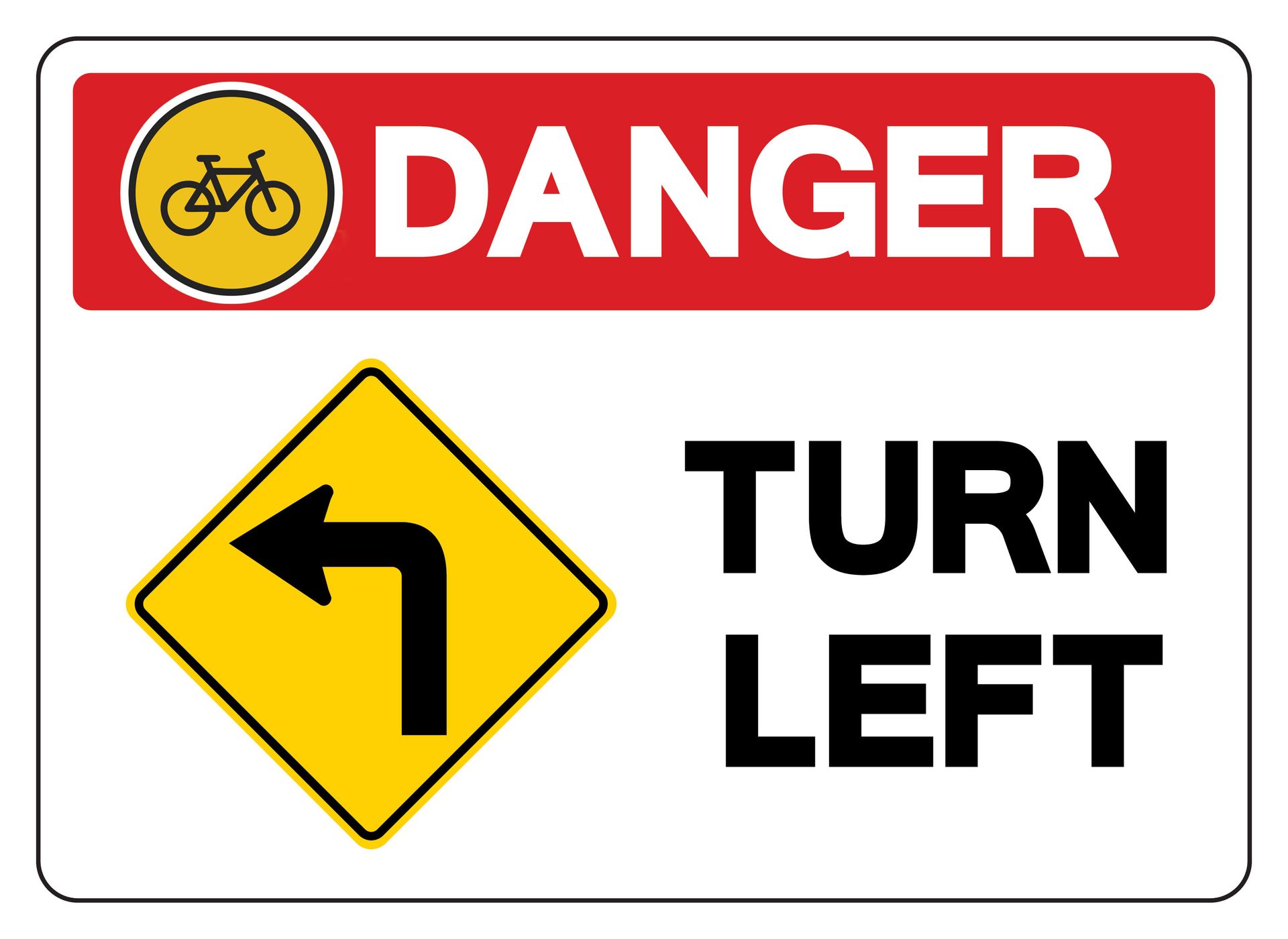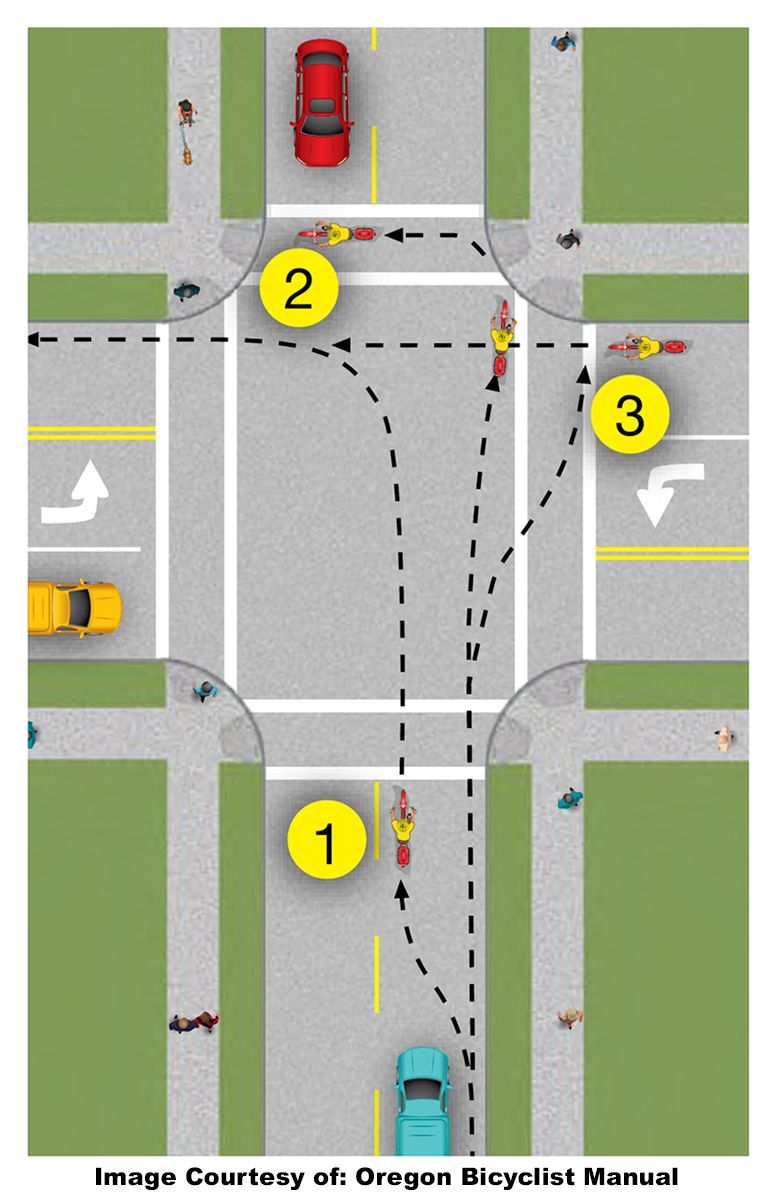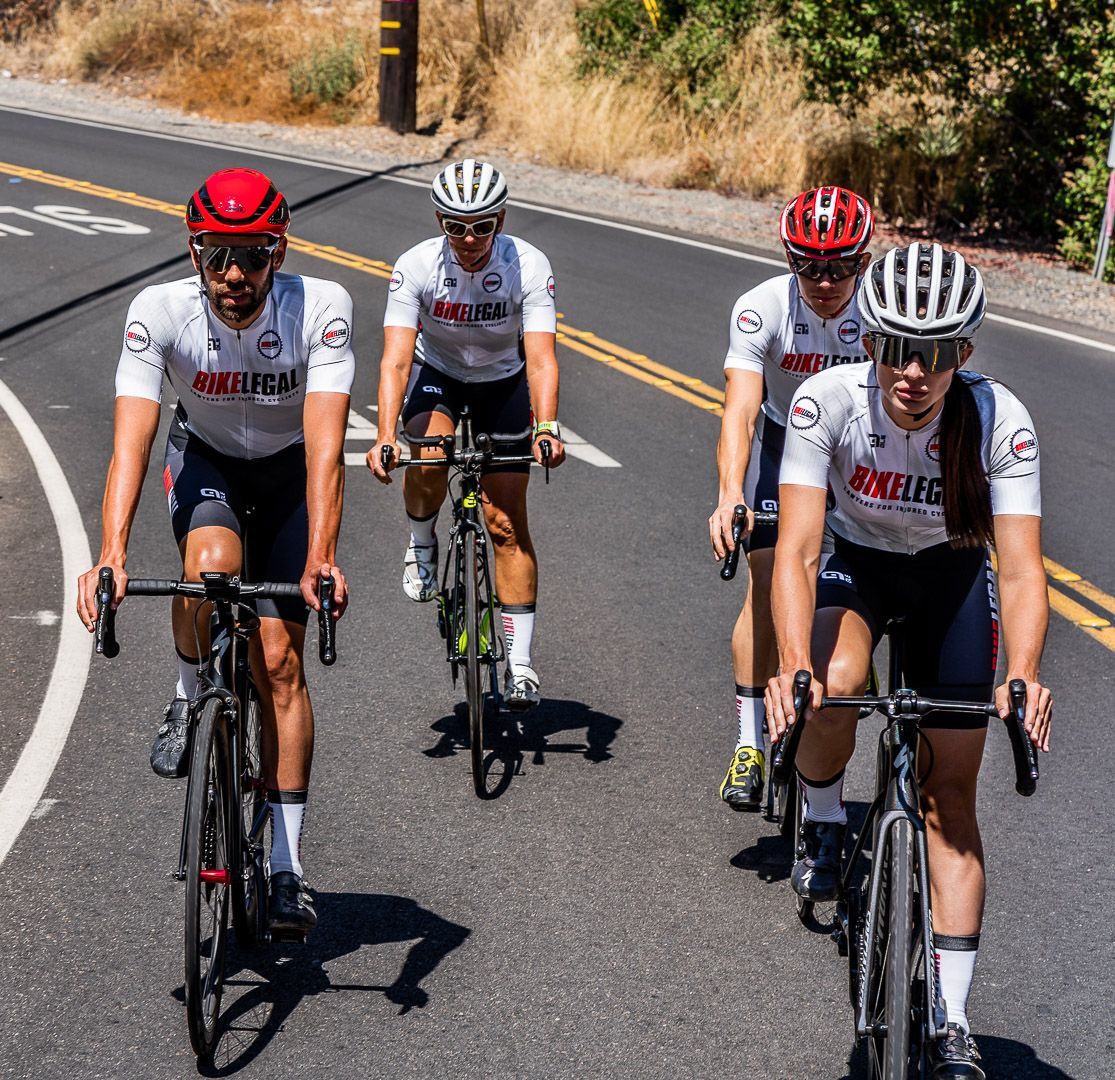Navigating Left Turns - Exploring The Best Approaches For Cyclists
Follow us on
social media!
Navigating Left Turns - Exploring The Best Approaches For Cyclists

Have you ever found yourself unsure about the best way to make a left turn while cycling? You're not alone. Making left turns on a bicycle can be a daunting task for many cyclists. Unlike right turns, which are usually straightforward, left turns require careful maneuvering, decision-making, and an understanding of traffic dynamics. Cyclists often face challenges such as navigating multiple lanes, interacting with other road users, and ensuring their safety while turning.
In this blog post, we will delve deep into the topic of navigating left turns as a bicyclist. Our primary objective is to provide valuable insights, practical tips, and techniques to help cyclists tackle the challenges associated with left turns. We will explore different approaches, discuss factors to consider and offer safety guidelines to enhance your skills and confidence when making left turns.
Whether you're a beginner or an experienced cyclist looking to refine your abilities, this blog post will equip you with the knowledge and strategies needed to easily navigate left turns. So, let's dive in and explore the best approaches for mastering left turns as a cyclist.
Understanding the Road Environment: Key Factors for Safe Left Turns

When it comes to making safe left turns as a bicyclist, it's essential to have a thorough understanding of the road environment and consider key factors that contribute to a successful maneuver. By considering these factors, you can navigate left turns confidently and minimize potential risks. Here are some important aspects to consider:
Intersection Layout
The intersection layout plays a crucial role in determining the best approach for making a left turn. Pay attention to dedicated bike lanes, turn lanes, and traffic signals. Understanding the specific infrastructure design will help you position yourself correctly and anticipate potential conflicts with other road users.
Traffic Volumes and Patterns
Assess the traffic volumes and patterns at the intersection. Observe the flow of motor vehicles, pedestrians, and other bicycle riders. Recognizing peak traffic times and identifying any potential bottlenecks or congested areas will help you plan your left turn more effectively.
Roadway Markings and Signs
Look for pavement markings, such as arrows or bike symbols, indicating designated bike paths or lanes. These markings can guide you in positioning yourself appropriately and following the designated path for left turns. Additionally, pay attention to any signage that provides specific instructions or warnings for cyclists.
Visibility and Sight Lines
Ensure that you have good visibility of the intersection and approaching traffic. Clear sight lines will allow you to assess the oncoming vehicles and pedestrians, allowing you to safely time your left turn. If visibility is limited due to parked vehicles or other obstructions, adjust your positioning accordingly and use extra caution.
Communication and Eye Contact
Establish clear communication with other road users, particularly motorists and pedestrians. Use hand signals to indicate your intention to make a left turn. Making eye contact with drivers and pedestrians can help ensure that they are aware of your presence and intentions, reducing the risk of potential collisions.
Anticipating Turning Conflicts
Be mindful of potential conflicts with turning motorists or other cyclists at the intersection. Anticipate the movements of other road users and adjust your positioning and speed accordingly. Avoid assuming that all drivers are aware of your presence, and always prioritize your safety.
Techniques for Making Left Turns: From Traditional to Advanced Approaches
In this section, we will explore different techniques for making left turns as a cyclist, exploring both traditional and advanced approaches. Each technique has its advantages and considerations, and understanding these options can help you choose the most suitable approach for different road scenarios. View this video from Bicycling Magazine on making left turns. Let's explore these techniques in detail:
Traditional Left Turn
The traditional left turn technique is a commonly used method for making a left turn at intersections. It involves merging into the designated left-turn lane or positioning yourself in the center of the travel lane if there is no dedicated turn lane. Here's a detailed explanation of the steps involved:
Check for a Gap in Traffic
Before initiating the left turn, check for a safe gap in oncoming traffic. Ensure that you have enough time to complete the turn without impeding or conflicting with other vehicles.
Signal Your Intention
Clearly indicate your intention to make a left turn by using appropriate hand signals or vehicle indicators. Signaling allows other road users to anticipate your actions and adjust their driving accordingly.
Move Into the Leftmost Lane or Turn Lane
If there is a designated left-turn lane on the road, smoothly merge into it. You should position yourself near the left boundary of the lane while ensuring a safe distance from the median or painted lines. In the absence of a dedicated left-turn lane, "take the lane" by situating yourself in the center of the travel lane. This positioning reduces the chance of vehicles trying to pass you while you're preparing to make your turn, thereby enhancing your safety.
Moreover, in scenarios where multiple left-turn lanes are present, make sure to use the rightmost one. This approach positions you closer to the right side of the road, allowing you to merge safely back to the right once your turn is completed.
Proceed Through the Turn When Clear
Once you have positioned yourself in the appropriate lane, carefully monitor the oncoming traffic. Yield to any vehicles or pedestrians that have the right of way. When it is safe to do so, proceed through the turn while maintaining a steady speed and following the curvature of the road.
The traditional left turn is a common and predictable method used by bicyclists and motorists alike, and it is typically the fastest option, especially when timed with a green light. By following these steps and adhering to traffic rules, you can safely navigate a traditional left turn on the road.
The “Box Turn” Method

Cyclists often use a technique called a "box turn" or "Copenhagen left" as a safer alternative to directly turning left at busy intersections. This approach essentially involves making a U-turn followed by a right turn, but it's important to remember to always adhere to local traffic laws and ensure U-turns are permitted in the area you're cycling.
Here's how to execute a box turn:
Identify a Suitable Intersection
Before reaching the intended left turn, evaluate the upcoming intersection to ensure it's suitable and safe for executing your box turn. Look for an intersection with permissible U-turns or traffic lights.
Move to the Rightmost Lane
Instead of positioning yourself for a typical left turn, stay in the rightmost lane or bike lane if available. Ensure you're visible to other road users and clearly signal your intentions.
Wait for a Safe Opportunity to Cross
Carefully observe the traffic. When you have a clear gap or the light is green, cross the intersection like a pedestrian. This will place you perpendicular to your original direction of travel.
Prepare for Your 'Left' Turn
You'll now be positioned on the far corner of the intersection, facing the direction you originally intended to turn left onto. Stay to the right of the lane or in the bike lane if one is available.
Proceed with Your 'Left' Turn
Once traffic is clear or you have a green light in your new direction of travel, proceed straight. This completes your 'left' turn via the box turn method.
Remember, safety is paramount when performing a box turn. Stay alert, yield to pedestrians and other vehicles when necessary, and follow all traffic laws and signals. Always adapt your maneuvers to the current road conditions and traffic patterns, ensuring each move can be performed safely.
Bike Box and Advanced Infrastructure
In cities with advanced cycling infrastructure, bike boxes or advanced signaling systems may be implemented to enhance left-turn safety. Bike boxes are designated areas at intersections where cyclists can position themselves in front of motor vehicles during a red light. When the light turns green, cyclists have a head start, allowing them to make left turns before other vehicles. Familiarize yourself with any advanced infrastructure features in your area and follow the designated markings and signals accordingly.
By considering the road environment, assessing traffic patterns, and choosing the appropriate approach for each situation, you can confidently navigate left turns and minimize potential risks.
Seeking Legal Assistance After a Bicycle Accident?
Contact Bike Legal at 877-245-3534 for a free consultation. Our experienced team specializes in bicycle accident cases, fighting for the rights of injured cyclists. With our client-centered approach and contingency fee basis, you only pay if we win your case.
So, don't face the aftermath of a bicycle accident alone. Call our bicycle accident lawyers today and get the justice and compensation you deserve!
FAQs
How to Make a Left Turn on a Bike?
To make a left turn on a bike, position yourself in the bike lane or bicycle lane (if available), signal your intention, check for oncoming traffic, and safely navigate across the lanes to complete the turn.
How Does a Bicyclist Signal a Left Turn?
To signal a left turn, a bicyclist extends his/her left arm straight out to the side. This indicates the cyclist’s intention to turn left to other road users. Additionally, a bicycle signal, equipped with a leading bicycle interval, provides dedicated time for bicyclists to navigate intersections and safely make their movements more predictable.

